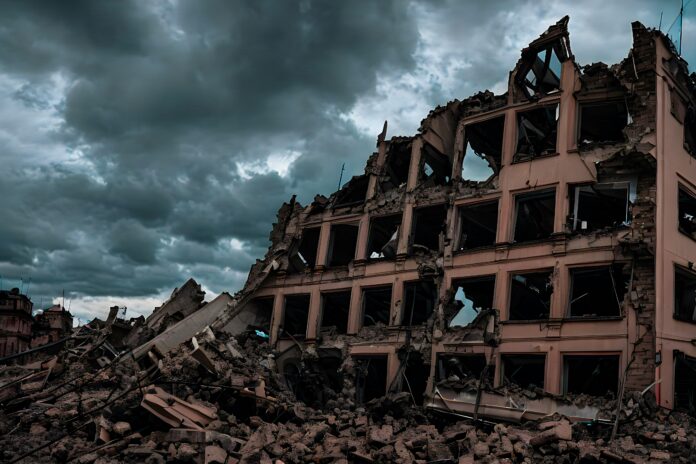Ukraine can still defeat Russia, but it needs the right tools to do it
By James Horncastle, Simon Fraser University
Ukraine’s strategic position has declined over the last six months. The summer offensive, which sparked hope among Ukraine and its supporters, failed to deliver significant territorial gains.
Furthermore, support for Ukraine — a given in 2022 — is increasingly under pressure due to the prolonged nature of the conflict and domestic pressures among its allies.
But this decline in Ukrainian fortunes does not mean, as some have claimed, that the war is unwinnable. Nor would a ceasefire necessarily mean an end to the conflict, given Vladimir Putin and his allies’ past track record in the eastern Donbas region of Ukraine.
Instead, what’s needed now is a realistic assessment of Ukraine’s position and what is achievable.
Assessing the situation
Military conflict is about achieving political objectives. Unfortunately, for both Russia and Ukraine, there’s a disconnect between their military capabilities and their desired political goals.
President Volodymyr Zelenskyy’s rallying of the Ukrainian people at the start of the current phase of the conflict is one of the most impressive displays of wartime leadership in recent memory. Zelenskyy’s efforts, however, sowed the seeds of the current problem.
Zelenskyy, at the outset of the conflict, argued that Ukraine would not stop until all Ukrainian territory, including Crimea — annexed by Russia in 2014 — is liberated and Russian forces expelled from the country.
This defiance served to rally the Ukrainian people in a moment of need. Zelenskyy’s inability to pivot from this maximalist argument, however, is now becoming a hindrance.
In the ongoing battle for Bakhmut, the symbolism of the battle has long overtaken military calculations. With the world watching, Zelenskyy refused to disengage after Ukrainian forces had arguably achieved their objectives in the eastern city.
Bakhmut, instead, has become exactly what Ukraine needed to avoid: a protracted battle in a region that does not help its ultimate goal of defeating Russia.
Rallying international support
Ongoing support for Ukraine is vital. Not only does Ukraine require it, but Russian ally Venezuela’s threats to annex territory from neighbouring Guyana demonstrate that protecting international norms is in the interest of Ukraine’s allies as well.
Venezuela wants to “annex” 70% of Guyana’s land via a 200 year old land dispute. Venezuela’s population is 28.5 million and Guyana’s is 743 thousand. Venezuela’s military is over 15 times larger than Guyana’s and heavily funded.
A deeply concerning time.
— Richie Brave 🇬🇾🇬🇾 (@RichieBrave) December 1, 2023
One point that critics of Ukrainian aid are correct in pointing out is that aid is currently not tied to clear objectives.
In the initial stages of the war, it was important for Ukraine’s allies to provide anything and everything and worry about its application later. Now that the front has stabilized, however, the goal should be to provide aid that will help Ukraine achieve its objectives.
Zelenskyy is aware of the importance of international aid for Ukraine. Zelenskyy’s North American trip in September was aimed at helping Ukraine win the long war.
He recently returned to the United States due to domestic American politics that threaten ongoing aid.
But in order to maintain the support of increasingly skeptical allies, Zelenskyy needs to be equally honest about Ukrainian objectives and acknowledge it’s not realistic, given Ukraine’s current political and military situation, to return to pre-2014 borders.
Providing the right tools
The more limited goal of retaining the country’s pre-February 2022 territory is within the realm of possibility, but Ukraine’s allies need to provide it with the right type of aid. That would solve two problems: one military, and one political.
In terms of the military problem, it’s quite clear from the summer counteroffensive that it’s one thing to provide aid, but another for a state to employ it effectively. One cannot simply deploy American and European military hardware and expect the Ukrainian army to fight like American or German forces.
Western military doctrine, furthermore, is not perfect. In fact, many of the issues present in the Russian armed forces that have drawn criticism — such as the principles behind river crossings — exist within western-style armies as well.
Instead of basing the types of supplies provided on what Ukraine believes is needed under western doctrine and tactics, its allies should ground that aid in the experience of the summer counteroffensive.
It failed for several reasons. Prominent among them was Russia’s development of extensive fortifications and what’s known as defence in depth. Both are designed to counter the manoeuvre warfare favoured by western-trained forces.
If Ukraine’s allies continue to provide weapons the Russians have successfully countered, it will not only be ineffective aid from a military standpoint but contribute to potential war fatigue as well.
Instead, western aid should focus on providing tools to overcome Russia’s defensive systems. Foremost among them are artillery, both shells and replacement artillery tubes, as well as engineering vehicles. Ukraine needs these tools, rather than new mechanized brigades, to overcome Russian defences.
The problem in Ukraine fighting in a slow, deliberate manner that is ably supported by artillery and engineering vehicles is that territorial gains will be slow.
The slow pace of the operations is difficult for allied politicians to sell to their constituents. But doing so will be considerably easier with a clearly defined, and plausible, objective.![]()
James Horncastle, Assistant Professor and Edward and Emily McWhinney Professor in International Relations, Simon Fraser University
This article is republished from The Conversation under a Creative Commons license. Read the original article.



